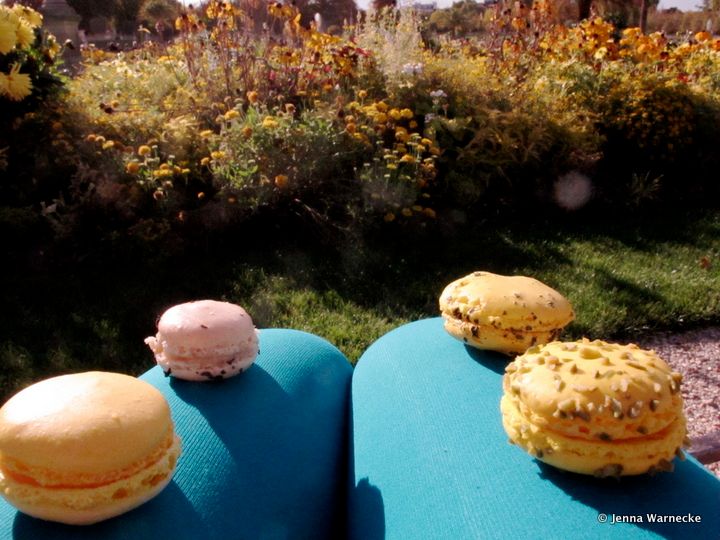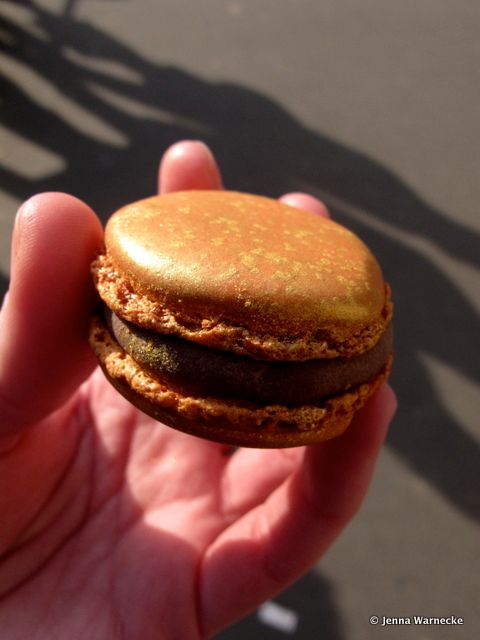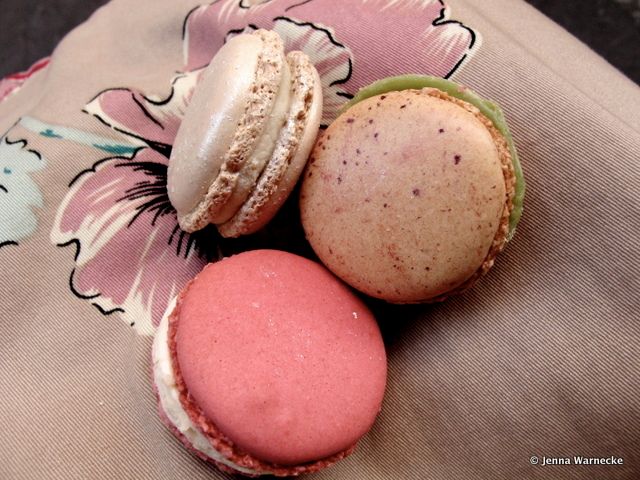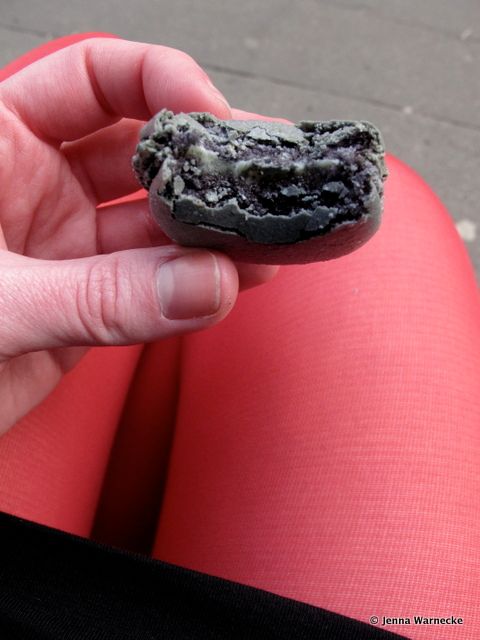100th Anniversary Great Nave Tour at the Cathedral of St. John the Divine
Celebrate the 1925 construction of the stunning nave inside the world's largest Gothic cathedral!



Sometimes life is pretty tough. Spending several days sampling the macarons of Paris and deciding which are the best was a pretty difficult endeavor indeed. I traversed the streets in search of the elusive “perfect macaron,” my standards and blood sugar equally high. The hardship of this enterprise is hard to overstate, but if just one sweet-toothed gourmand can benefit from my knowledge, it will all be worth it. Know only that I did it for you, Dear Reader. It was all for you.
It all comes down to a matter of preference. I think everyone has a different idea of what constitutes a great macaron, and this disaccord is what leads two very different pâtisseries like, say, Pierre Hermé and Gérard Mullot to both be considered “the best.” For me, the little pastry should be big enough for 2-3 bites, soaring with a complication of complementary flavors, soft but chewy, chewy but not tough, and the color of a humiliating bridesmaid’s dress.
Let’s get the big one out of the way, the most famous macaron in Paris. Ladurée is kind of like the Kate Bosworth of macarons: totally pretty, but honestly kind of boring and hard to understand why everyone likes it so much. Is it because they offer very “classic” (read: basic) flavors, like chocolate and vanilla? Is it because the shininess of the boutique and pretty pastel packaging fulfills everyone’s dream of a romantic Paris? In any case, I’ve never found Ladurée to be wildly amazing. When I stopped by recently, I thought their fruity selections, like rose doudou and orange sanguine gingembre, were too super-candied in flavor and bouncy, nearly marshmallow-like in texture. However, the reglisse — a version of liquorice — was creamy, dense and interesting. I kept looking down at the mac with a furrowed brow, as though it were trying to tell me a secret which I couldn’t quite hear.
Next I went to Pierre Hermé, whose pâtissiers are not afraid to go wild and experiment with crazy new flavor combinations. The simple rose flavor, light and perfume-y, put me in seventh heaven and the mosaic tasted so much like Christmas I half-expected a drunk uncle to pop out of nowhere. Their textures were a bit too creamy for me, but had a nice enough bite. Their wildest and greatest flavor, though, is chocolat-foie gras, a seasonal run which is an adventure of sweet-salty-sweet that’s sure to set your mind swimming and taste buds into freakout mode. Macs like that are what make life worth living.
 (The chocolat-foie gras from Pierre Hermé)
(The chocolat-foie gras from Pierre Hermé)
Gérard Mulot in the 6ème got me likewise excited, with a dozen flavors ranging from regular citron to pineapple-ginger and strawberry basil. I tried those three, and while their flavor was incredible and strong, the texture ruined the experience. With a crispy, nearly flaky exterior and straight-up marmalade interior, the flavors were forced to separate, not sing together. This macaron choir was disharmonious, tasting more like a pastry version of a Fruit Gusher than a real mac.
The goods at Dalloyau, while elegant, were small and fell apart in a creamy mess in my fingers. My supposedly Earl Grey-flavored treat tasted exactly like Fruity Pebbles, which was a nice hit of nostalgia but not what I look for in a macaron.
At Sadaharu Aoki I learned that wasabi has no place in a sweet thing. At Biscuiterie de Montmartre I learned that it is possible for a mac to stay with you forever — that is, stuck into every crevice of your teeth.

The interior of Hugo et Victor looks like a pâtisserie on a space ship, all sleek black surfaces with chocolates and treats lit from I know not where. I ordered two macs and told the cashier to pick a third as a surprise for me. She gave me the mango, which held a texture only as bouncy as the perfect mattress and featured a soft blaze of true mango flavor — difficult to achieve outside of a Mexican fruit grove. The Kaffir Lime mac was genuinely distinctive, so earthy as to be nearly leafy, with an interior that burst forth with bright citrus taste like a good summer tea. There was joy to be found in the successive waves of flavor from these macs. It occurred to me that this is what separates a regular pastry from a real treat — the interior should be like a secret weapon, unleashing a burst of flavor that expounds upon the one introduced by the gentle exterior.
Finally there was Arnaud Larher, tucked into the curve of rue Caulaincourt in Montmartre — a veritable outcast in a world of pâtisseries mostly scattered around neighborhoods surrounding the Seine. It’s a simple sweet shop, not fancy like Ladurée or Dalloyau, but the people working there are always nice and there’s usually free samples on the counter. I ordered one each of the citron, mille fleurs and absinthe, which is only available in the colder months. The citron was as bursting and bright as one I’d had at Gérard Mulot, but denser and chewier, like a bite of sunshine. The mille fleurs was a classic fruit combo with the flavors of violet and poppy flower. But the absinthe — there are no words. This is what I had been searching for, maybe my whole life. Flecks of edible glitter top this dark silver wonder, and with a solid 3 bites of perfect denseness and a give of softness in the middle, like a good lover this treat gives you time to enjoy it. The absinthe flavor is nearly indescribable; it doesn’t have the overwhelming liquorice taste common to so many anise treats, only a hint — the mystery of flavor that simply tastes familiar and cozy, as though you’ve been missing it but never knew.
 (True love: l’Absinthe from Arnaud Larher)
(True love: l’Absinthe from Arnaud Larher)
Maybe it was because it was the last place on the list; maybe my blood was just pumping so fully with sugar from 21 macarons in 7 days that I was in ecstasy already. But the macarons at Arnaud Larher were (and have been, each time I’ve visited) among the best desserts I’ve ever eaten, and to me they are the best macarons in Paris.
But like I said, it’s a matter of preference. At nearly each place I visited, there was a mac worth having. The reglisse at Ladurée deserves to be revered, while the mango at Hugo & Victor and the chocolat-foie gras at Pierre Hermé were equally incredible discoveries of both the simplicity and complication of flavor. It’s not easy to put a judgment as hallowed as “Best in Paris” onto something that is, at most, a few bites, but if the pâtissier can stand up to the job and pack flavor, delicacy and harmonious edible beauty into those few bites, as they do at Arnaud Larher, the title is well-deserved.
Subscribe to our newsletter